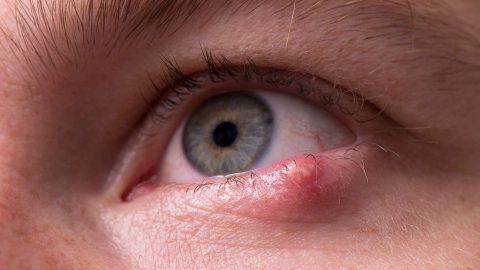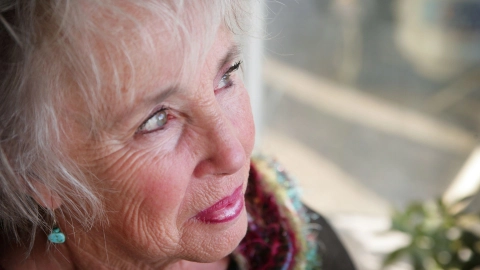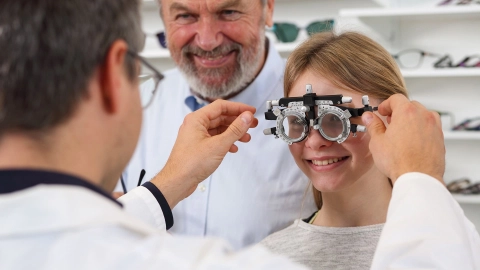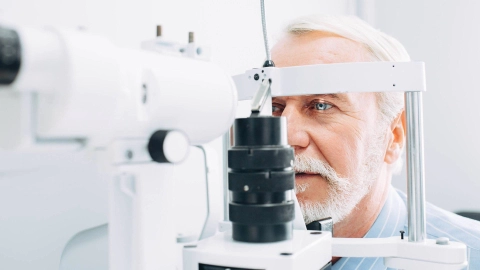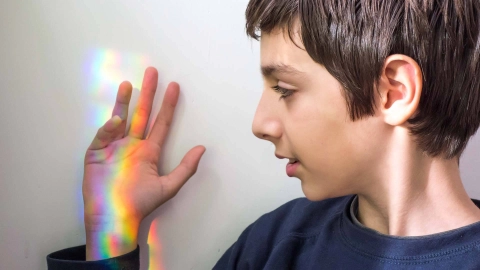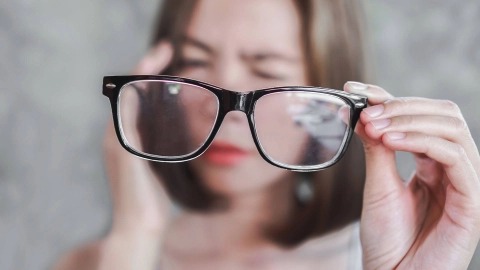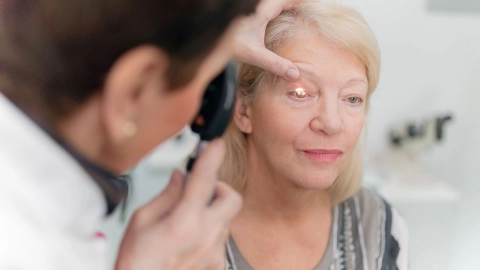Age-related macular degeneration (AMD) intensifies the natural deterioration of the eyesight as people age. More about origin, symptoms, and treatment of this eye disease.
Find out more
Most people in their mid-forties begin to experience presbyopia, i.e., a loss of near vision. Presbyopia cannot be reversed but treatment compensates effectively for the symptoms.
Find out more
Eye diseases like glaucoma can occur as we get older. The disease is also known as green star. Potential sight loss can be stopped if identified early.
Find out more
A small foreign body can quickly get into an eye. Sometimes the cornea of the eye is damaged in the process. A superficial injury usually heals within a short time.
Find out more
Styes and chalazia: what is eyelid inflammation and how does it progress? Learn more about the symptoms, causes, and treatment.
Find out more
A cataract gradually turns the lens of the eye cloudy. The person's sight then becomes increasingly blurred, as if looking through a veil or fog. In the long term, only an operation will help.
Find out more
Typical signs of conjunctivitis are eyelids that stick together and an itching and burning sensation in the eyes. It can be caused by viruses or bacteria, but can also have other causes.
Find out more
A pterygium (surfer’s eye) is a growth of tissue on the conjunctiva of the eye. It is often visible as a patch or area of cloudy white in the corner of the eye next to the nose.
Find out more
With astigmatism, the image on the retina is blurred. Spectacles, contact lenses or an operation can correct this sight defect.
Find out more
Lazy eye (amblyopia) is a common visual defect in children. One eye sends the brain an image that is more blurred than the other. This prevents children’s eyesight from developing properly.
Find out more
Retinal detachment is an emergency that requires rapid treatment. Find more information here about symptoms, outlook, and treatment.
Find out more
Dry eye often causes soreness and burning sensations, as well as redness and swollen eyelids. The symptoms usually respond well to treatment.
Find out more
The term “color blindness” is used to describe various conditions that involve an inability to distinguish certain colors or any colors at all.
Find out more
Lacrimal duct diseases may affect the lacrimal glands and the draining tear ducts. Read more about lacrimal duct obstruction and lacrimal gland inflammation here.
Find out more
With keratoconus, the cornea of the eye becomes increasingly distorted and vision deteriorates. Different treatment options are available, depending on the stage.
Find out more
People with short-sightedness (also called near-sightedness or myopia) have blurred, unclear vision of objects in the distance. Short-sightedness can be corrected by wearing glasses or contact lenses.
Find out more
A corneal ulcer involves damage to parts of the cornea. It often heals after the causes have been treated – but scars may remain on the cornea.
Find out more











